The national maize area planted in spring saw a phenomenal increase of 52% over that sown in 2017. According to official figures, there was over 18,000ha of maize sown this year.
The higher than average temperatures experienced have benefited the national maize crop and as a result many crops are ready or almost ready to be harvested. The year has been most favourable for maize and continues to be as dry matter is still accumulating in developing crops. However, storm Ali has caused a large amount of maize crops in various regions to lodge.
To get the right mix between yield and nutritional quality from a crop of maize, farmers should be targeting a 32:32 crop, meaning 32% dry matter and 32% starch. However, due to obvious factors such as the weather this is not always possible.
When is a crop ready for harvest?
A crop of maize should be deemed fit for harvest based on the grains in the cob and not the actual plant. Farmers should aim to have a fully formed cob with no soft grains. Once there is liquid present within the grains, this means grain fill is still taking place.
White liquid in the grains generally comprises either sugar or starch. By harvesting a crop that is not yet fit, farmers are at risk of losing this sugar and starch through effluent run off, thus losing the real feeding power of the crop.
How should I harvest a lodged crop?
There is no right or wrong way to harvest a crop of lodged maize. Various methods will work in different fields at different times of the day with varying moisture levels. Crops will flow much easier in drier conditions in comparison with higher moisture conditions. It also must be noted that different methods may be successful depending on what angle the crop lodges at.
Speaking to various contractors around the country, many have found it most successful to cut in the direction in which the crop lodged, while travelling to the other side of the field not cutting anything.
Regardless of the method, machine operators need to minimise the losses of cobs.
Mark Kehoe, forage harvester specialist with Kellys of Borris, gave us five tips for getting a Kemper Champion 345 rotary header (4.5 metre) ready for the harvest. However, these tips would be applicable for any rotary header.
Blades
It is essential that all blades are checked for wear and breakages. If the blades are blunt, the header will have a tendency to push the crop away from the machine rather than pull it in. Blunt blades will struggle in crops that may contain scutch or grass. Although more expensive, Mark would advise operators to fit hardened Tungsten steel blades as they will be cheaper in the long run. A set of new blades could last anywhere up to 1,500 acres if the crop is cut at the right height.
Gearboxes
All maize headers on the market are run off a large amount of gearboxes. This Kemper header is no different and is equipped with 16 gearboxes. As with any gearbox, oil levels should be checked and the oil needs to be replaced at regular intervals depending on the manufacturer’s recommendations. As the gearboxes run close to the ground, it is not unusual for seals to be damaged from interaction with foreign objects such as stones.
Fingers, dividers and cleaners
The fingers and dividers guide the crop into the cutting blades, meaning it is vital that they are present and intact. If either are absent it may lead to premature blockages and may have serious implications on crop flow. Typically, each drum will have two to three cleaners that run parallel to the cutting blades. The cleaners carry out a vital job ensuring the lower drum (cutting area) is kept free of debris. If the cleaners are absent or damaged, the debris build-up will place an increased load on the machine. If the build-up is very bad, it will set off the slip clutch.
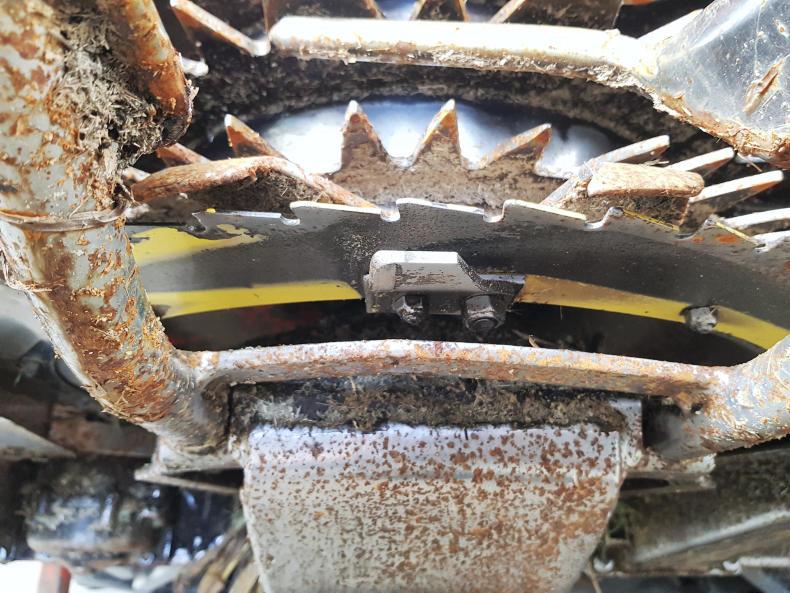
Cleaners. The cleaners keep the cutting area free of debris.
Land slides
The land-slides run underneath the drums and above ground level. It is important they are not torn or damaged and should be replaced if they are. This year’s harvest may prove to be very hard on the land slides as contractors will need to run the header closer to the ground to attempt to gather lodged crops. As a result it is essential they are in good condition.
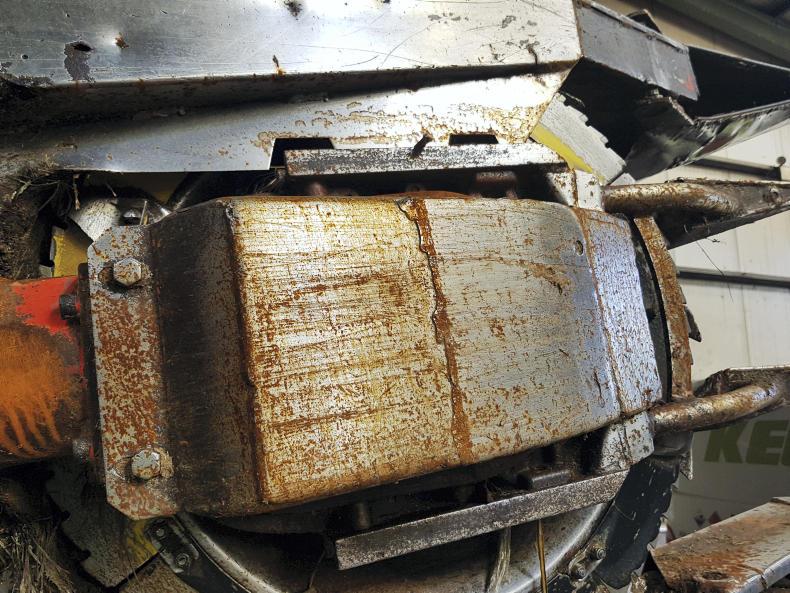
The land slides must be in good condition as they will protect the header from making contact with the ground.
Quick coupler drive
The outer rotors are driven off the quick coupler drives. As the outer rotors are hydraulically lowered to the same level as the adjacent rotor, the quick coupler drives will come together. Operators should check the edges on the drive for wear or rounding as this will cause slippage. These drives should be replaced as a set.
The national maize area planted in spring saw a phenomenal increase of 52% over that sown in 2017. According to official figures, there was over 18,000ha of maize sown this year.
The higher than average temperatures experienced have benefited the national maize crop and as a result many crops are ready or almost ready to be harvested. The year has been most favourable for maize and continues to be as dry matter is still accumulating in developing crops. However, storm Ali has caused a large amount of maize crops in various regions to lodge.
To get the right mix between yield and nutritional quality from a crop of maize, farmers should be targeting a 32:32 crop, meaning 32% dry matter and 32% starch. However, due to obvious factors such as the weather this is not always possible.
When is a crop ready for harvest?
A crop of maize should be deemed fit for harvest based on the grains in the cob and not the actual plant. Farmers should aim to have a fully formed cob with no soft grains. Once there is liquid present within the grains, this means grain fill is still taking place.
White liquid in the grains generally comprises either sugar or starch. By harvesting a crop that is not yet fit, farmers are at risk of losing this sugar and starch through effluent run off, thus losing the real feeding power of the crop.
How should I harvest a lodged crop?
There is no right or wrong way to harvest a crop of lodged maize. Various methods will work in different fields at different times of the day with varying moisture levels. Crops will flow much easier in drier conditions in comparison with higher moisture conditions. It also must be noted that different methods may be successful depending on what angle the crop lodges at.
Speaking to various contractors around the country, many have found it most successful to cut in the direction in which the crop lodged, while travelling to the other side of the field not cutting anything.
Regardless of the method, machine operators need to minimise the losses of cobs.
Mark Kehoe, forage harvester specialist with Kellys of Borris, gave us five tips for getting a Kemper Champion 345 rotary header (4.5 metre) ready for the harvest. However, these tips would be applicable for any rotary header.
Blades
It is essential that all blades are checked for wear and breakages. If the blades are blunt, the header will have a tendency to push the crop away from the machine rather than pull it in. Blunt blades will struggle in crops that may contain scutch or grass. Although more expensive, Mark would advise operators to fit hardened Tungsten steel blades as they will be cheaper in the long run. A set of new blades could last anywhere up to 1,500 acres if the crop is cut at the right height.
Gearboxes
All maize headers on the market are run off a large amount of gearboxes. This Kemper header is no different and is equipped with 16 gearboxes. As with any gearbox, oil levels should be checked and the oil needs to be replaced at regular intervals depending on the manufacturer’s recommendations. As the gearboxes run close to the ground, it is not unusual for seals to be damaged from interaction with foreign objects such as stones.
Fingers, dividers and cleaners
The fingers and dividers guide the crop into the cutting blades, meaning it is vital that they are present and intact. If either are absent it may lead to premature blockages and may have serious implications on crop flow. Typically, each drum will have two to three cleaners that run parallel to the cutting blades. The cleaners carry out a vital job ensuring the lower drum (cutting area) is kept free of debris. If the cleaners are absent or damaged, the debris build-up will place an increased load on the machine. If the build-up is very bad, it will set off the slip clutch.

Cleaners. The cleaners keep the cutting area free of debris.
Land slides
The land-slides run underneath the drums and above ground level. It is important they are not torn or damaged and should be replaced if they are. This year’s harvest may prove to be very hard on the land slides as contractors will need to run the header closer to the ground to attempt to gather lodged crops. As a result it is essential they are in good condition.

The land slides must be in good condition as they will protect the header from making contact with the ground.
Quick coupler drive
The outer rotors are driven off the quick coupler drives. As the outer rotors are hydraulically lowered to the same level as the adjacent rotor, the quick coupler drives will come together. Operators should check the edges on the drive for wear or rounding as this will cause slippage. These drives should be replaced as a set.






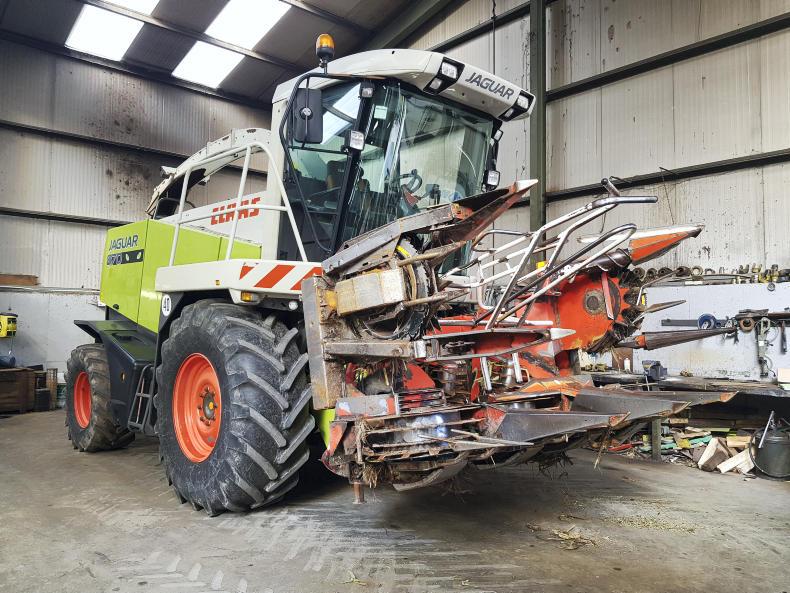
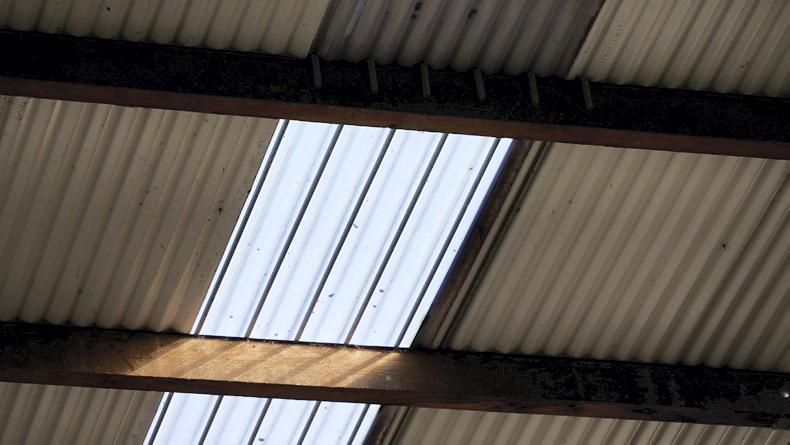
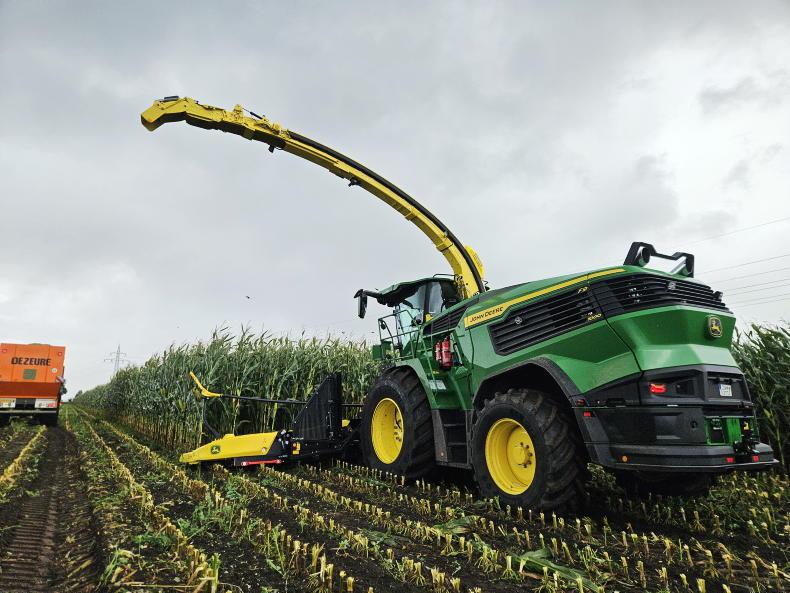
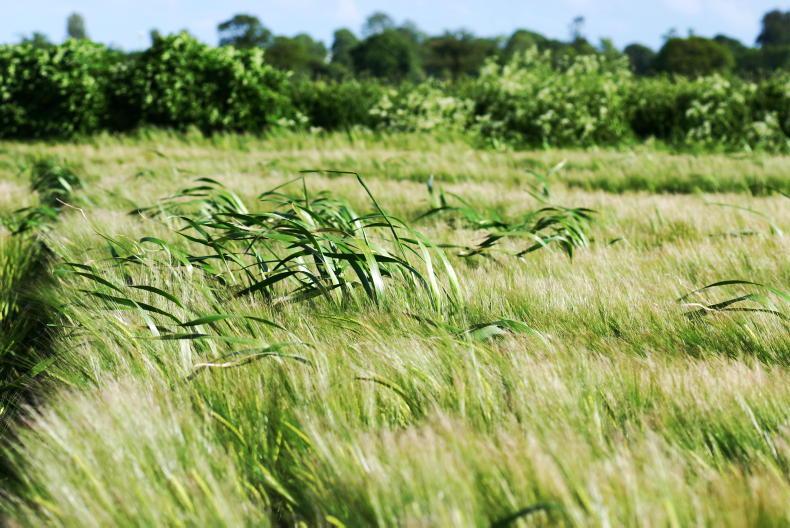

SHARING OPTIONS